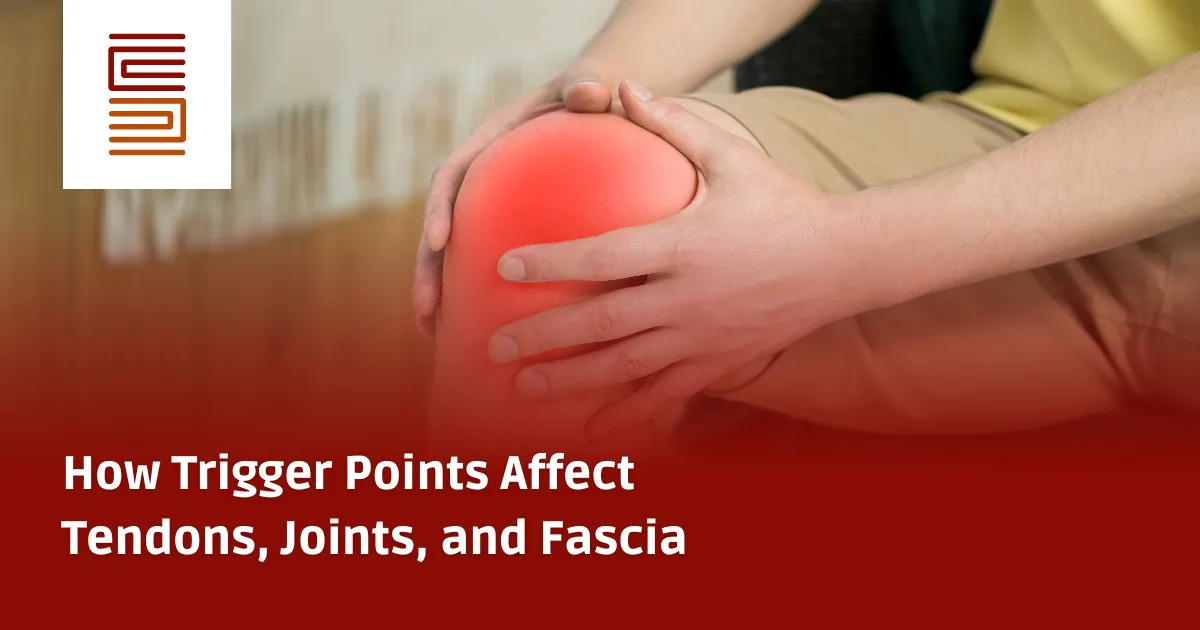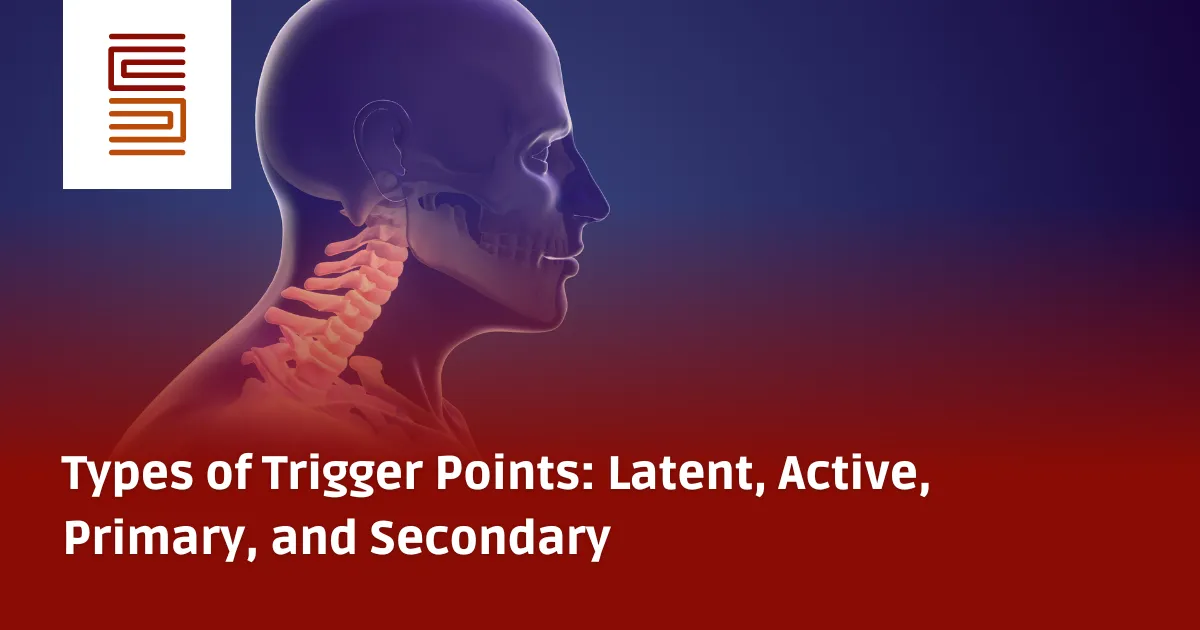How Trigger Points Affect Tendons, Joints, and Fascia
Learn how trigger points affect tendons, joints, and fascia, leading to inflammation, reduced mobility, and long-term structural changes in the body.
The Impact of Trigger Points on the Body’s Connective Tissues
Trigger point activity affects more than just muscles—it also has significant consequences for tendons, joints, and fascia. These effects can occur in both short-term and long-term time frames, leading to chronic pain, joint dysfunction, and structural changes in the body.
Understanding how trigger points interact with connective tissues can help prevent long-term musculoskeletal complications and improve treatment outcomes.
How Trigger Points Affect Tendons
Tendons connect muscles to bones, transmitting the force of a muscle contraction to enable movement. When a trigger point forms in a muscle, it places excessive stress on the tendon’s attachment site, leading to:
-
Short-Term Effects
- The formation of attachment trigger points, causes localized pain at the tendon’s insertion site.
- This pain often resolves once the trigger point in the muscle is inactivated.
-
Long-Term Effects
- Chronic stress from active trigger points can cause inflammation and eventual calcification of the tendon attachment.
- The body attempts to strengthen the attachment site by adding bone tissue, leading to the development of bone spurs.
- This process can contribute to tendonitis, tendinosis, and chronic joint pain.
Trigger Points and Joint Dysfunction
Trigger points affect joints by altering muscle tension and joint mechanics, leading to:
✔ Reduced Range of Motion – Tight muscles restrict joint movement, leading to stiffness and mobility issues.
✔ Articular Dysfunction (Subluxation) – Misalignment of the joint due to chronic muscle tension, often causing referred pain and joint instability.
✔ Joint Lubrication Deficiency – Joints rely on movement to distribute synovial fluid, which provides nutrition and lubrication to the joint surfaces.
✔ Calcification and Joint Fusion – If movement is restricted for too long, the body compensates by fusing the joint with calcium deposits, leading to degenerative joint conditions.
The Relationship Between Trigger Points and Chiropractic Treatment
- Joint dysfunction and trigger points are interconnected—sometimes, one causes the other.
- If joint misalignment (articular dysfunction) is caused by trigger points in surrounding muscles, then chiropractic adjustments alone will not provide lasting relief.
- For example, if the multifidi muscle group (which stabilizes the spine) has active trigger points, treating spinal misalignment without releasing these trigger points will only provide temporary relief.
This is why combining trigger point therapy with chiropractic care or physical therapy is often the most effective approach.
Trigger Points and Fascia Dysfunction
Fascia is the connective tissue network that surrounds and supports muscles, joints, and organs. It functions as the structural “glue” of the body, but it can be negatively affected by chronic trigger point activity.
✔ How Fascia Responds to Trigger Points
- Fascia adapts to muscle tension and mechanical stress, leading to structural changes over time.
- If trigger points remain active, the fascia thickens and stiffens, reinforcing muscle imbalances and joint restrictions.
- These fascial adaptations perpetuate dysfunction by locking the body into dysfunctional movement patterns.
✔ Common Fascial Problems Related to Trigger Points
- Myofascial Pain Syndrome (MPS) – A chronic pain disorder caused by multiple active trigger points and fascial tightness.
- Restricted Movement & Postural Distortions – Long-term fascial changes reinforce poor posture and improper movement mechanics.
- Chronic Pain & Inflammation – Fascial restrictions reduce circulation, contributing to pain and stiffness in affected areas.
Managing the Effects of Trigger Points on Connective Tissues
To prevent long-term joint, tendon, and fascial dysfunction, a comprehensive approach is required.
✔ Trigger Point Therapy – Directly releases active trigger points to restore normal muscle and tendon function.
✔ Myofascial Release Techniques – Helps break down fascial adhesions and restore tissue flexibility.
✔ Joint Mobilization & Chiropractic Care – Corrects articular dysfunction while reducing muscle tension.
✔ Physical Therapy & Strength Training – Strengthens weakened muscles to prevent recurrent trigger points.
✔ Postural Corrections & Ergonomic Adjustments – Prevents chronic muscle imbalances that contribute to joint stress and fascial tightness.
How NMSN Supports Individuals with Chronic Muscle and Joint Dysfunction
At New Mexico Support Network (NMSN), we provide expert care to help individuals manage chronic pain, joint dysfunction, and musculoskeletal imbalances caused by trigger points.
✔ Home Care Services – Assisting individuals with mobility issues and daily activities impacted by chronic pain.
✔ Hospice Care Assistance – Providing comfort and pain relief for individuals with long-term conditions.
Take Control of Your Musculoskeletal Health
If you are experiencing chronic pain, joint stiffness, or mobility issues, addressing trigger point dysfunction can help restore normal movement and reduce discomfort.
For professional care, contact New Mexico Support Network today.
Email: care@nmsupport.com
Phone: +1 833-773-0033 or +1 575-449-2009
Visit: New Mexico Support Network
Additional Resources for Pain and Musculoskeletal Health
External References
- National Institute of Arthritis and Musculoskeletal and Skin Diseases
- American Academy of Orthopedic Surgeons




